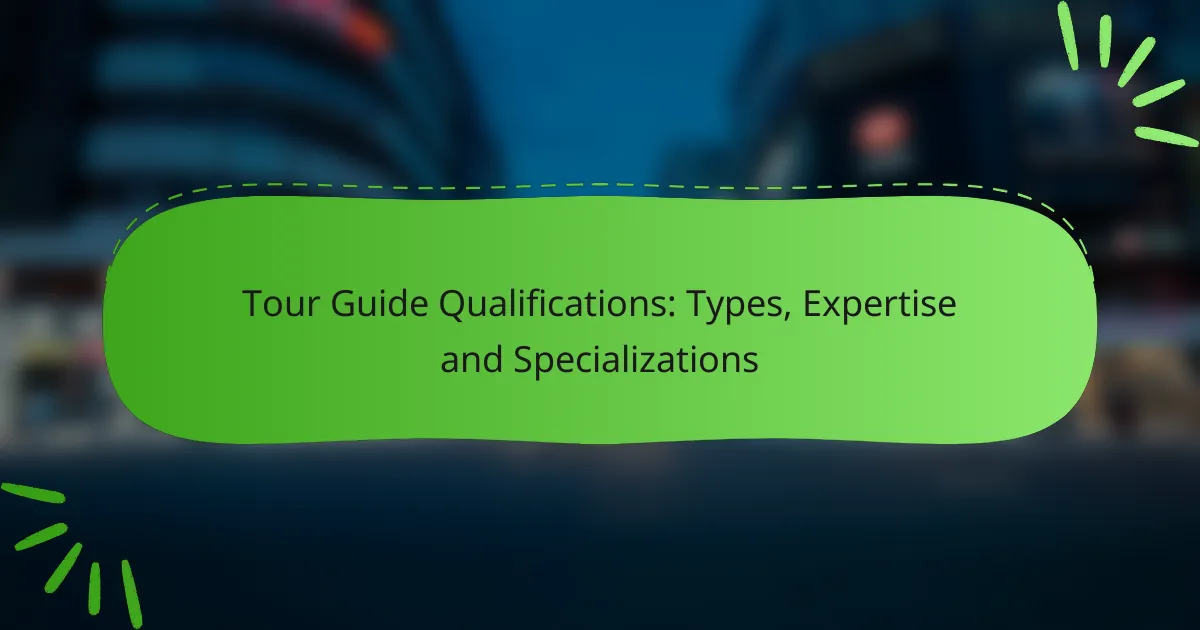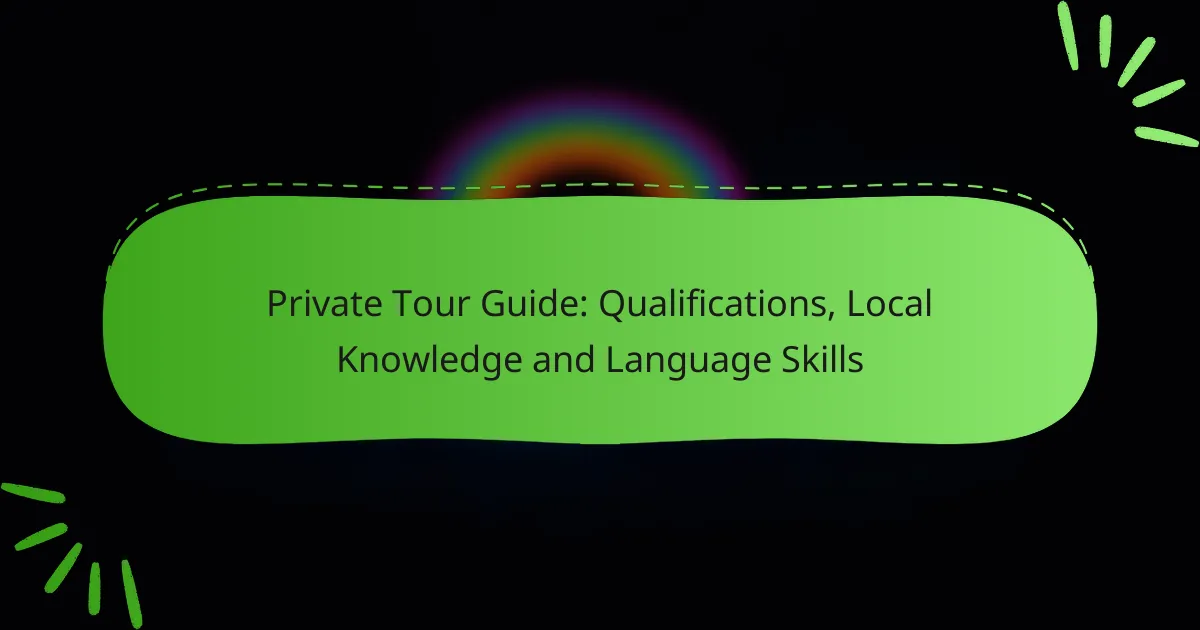Specialized guides play a vital role in enhancing art knowledge and engagement in museums and galleries. By offering insights into art history, techniques, and local scenes, these resources enrich visitors’ experiences and foster a deeper appreciation for artistic expressions. Additionally, the quality of tours is significantly influenced by factors such as guide expertise and group dynamics, which collectively enhance visitor interaction and satisfaction.
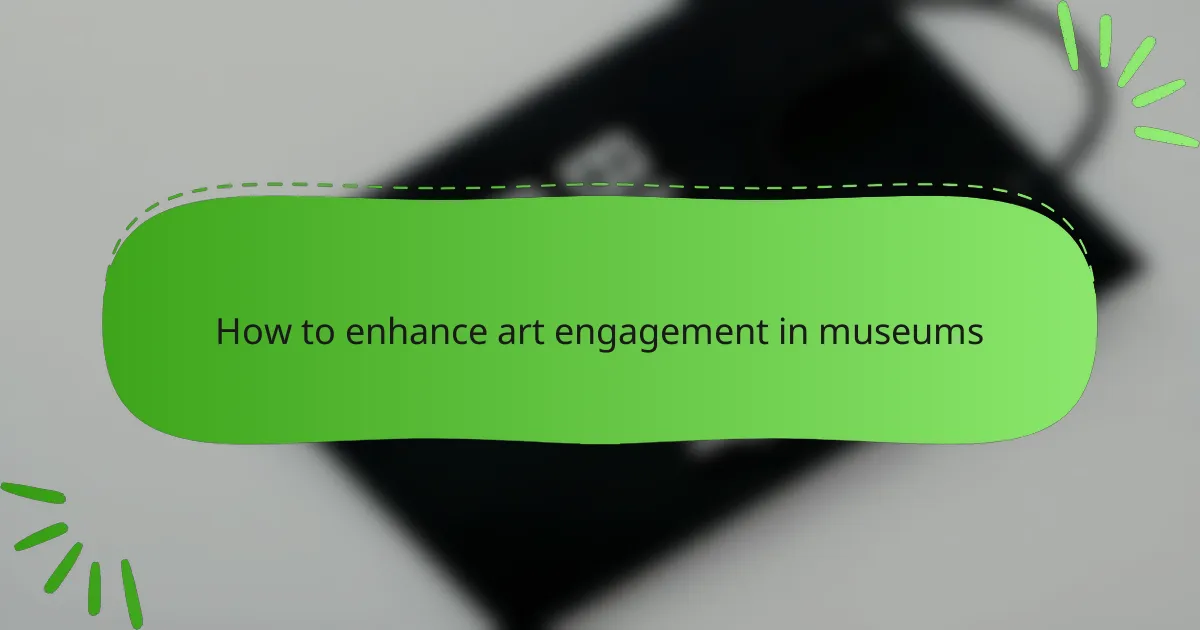
How to enhance art engagement in museums
Enhancing art engagement in museums involves creating interactive and immersive experiences that captivate visitors. By incorporating various methods, museums can foster a deeper appreciation for art and encourage active participation.
Interactive exhibits
Interactive exhibits allow visitors to engage directly with the artwork, often through touchscreens, augmented reality, or physical installations. These experiences can enhance understanding by providing context or encouraging exploration of themes. For example, a digital display might let visitors manipulate images or sounds related to a piece, making the art more relatable.
When designing interactive exhibits, consider the target audience and their preferences. Ensure that the technology is user-friendly and accessible to all age groups, including those with disabilities.
Guided tours with experts
Guided tours led by art experts provide visitors with in-depth knowledge and insights about the artworks and their creators. These tours can be tailored to various interests, such as historical context, artistic techniques, or thematic explorations. Engaging storytelling can significantly enhance the experience, making art more memorable.
To maximize the impact of guided tours, limit group sizes to ensure personal interaction and encourage questions. Offering multiple time slots or specialized tours can cater to diverse visitor preferences.
Workshops and hands-on activities
Workshops and hands-on activities invite visitors to create their own art, fostering a personal connection to the medium. These sessions can range from painting and sculpture to digital art, allowing participants to explore their creativity. Providing guidance from skilled instructors can enhance the learning experience.
Consider scheduling workshops during peak visitor times or special events to attract more participants. Offering materials at a reasonable cost or providing them for free can also encourage attendance.
Digital engagement tools
Digital engagement tools, such as mobile apps or interactive websites, can enhance visitor experiences by offering additional content and resources. These tools may include audio guides, virtual tours, or augmented reality features that bring artworks to life. They can also facilitate social sharing, allowing visitors to connect with others and share their experiences.
Ensure that digital tools are easy to navigate and compatible with various devices. Regular updates and new content can keep visitors returning for fresh experiences.
Community art projects
Community art projects encourage local involvement and foster a sense of ownership among residents. These initiatives can include collaborative murals, public installations, or art fairs that showcase local talent. Engaging the community in the creative process can enhance appreciation for art and its role in society.
To implement successful community projects, establish partnerships with local artists and organizations. Promote events through social media and local channels to maximize participation and visibility.
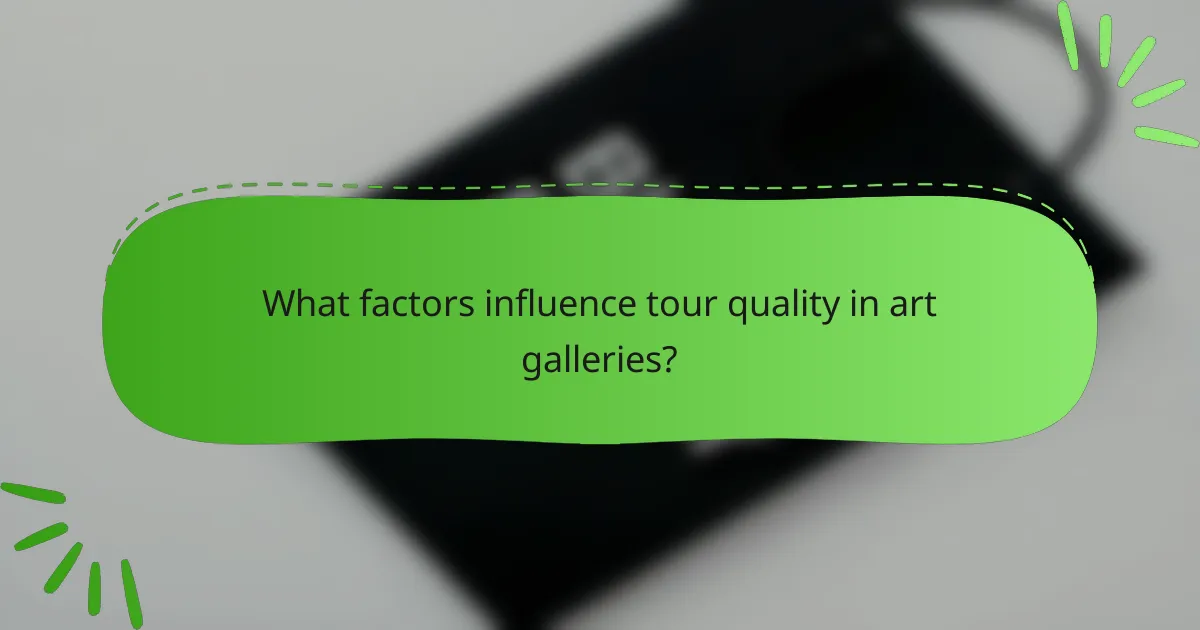
What factors influence tour quality in art galleries?
Tour quality in art galleries is influenced by several key factors, including the expertise of guides, group size, accessibility features, and feedback mechanisms. Each of these elements plays a crucial role in enhancing the overall visitor experience and engagement with the art.
Knowledgeable guides
Knowledgeable guides are essential for delivering high-quality tours in art galleries. They provide context, insights, and stories that enrich the visitor’s understanding of the artwork. A well-informed guide can answer questions and engage the audience, making the experience more interactive and memorable.
When selecting a tour, consider the guide’s background and expertise. Look for guides with formal education in art history or extensive experience in the field. This can significantly impact the depth and quality of information shared during the tour.
Group size and dynamics
The size and dynamics of the tour group can greatly affect the quality of the experience. Smaller groups typically allow for more personalized attention and interaction with the guide, fostering a more engaging atmosphere. Aim for groups of around 10 to 15 participants for optimal interaction.
Additionally, the dynamics within the group can influence engagement levels. A diverse group with varying interests can lead to richer discussions, while a more homogenous group may limit the range of perspectives. Consider joining tours that encourage questions and discussions among participants.
Accessibility features
Accessibility features are crucial for ensuring that all visitors can fully enjoy the art gallery experience. This includes physical access to the gallery, as well as accommodations for individuals with sensory or cognitive disabilities. Look for galleries that offer wheelchair access, audio guides, and sensory-friendly tours.
In many regions, galleries are required to meet specific accessibility standards. Familiarize yourself with these regulations to ensure that the tour you choose is compliant and inclusive. This consideration not only enhances the experience for those with disabilities but also enriches the tour for all participants.
Feedback mechanisms
Effective feedback mechanisms are vital for improving tour quality in art galleries. Collecting visitor feedback helps galleries understand what works well and what needs improvement. Look for tours that actively seek input from participants, whether through surveys or informal discussions at the end of the tour.
Galleries that implement changes based on feedback demonstrate a commitment to enhancing the visitor experience. Consider sharing your thoughts after a tour, as this can contribute to better future experiences for others. Engaging with galleries in this way fosters a community focused on continuous improvement.
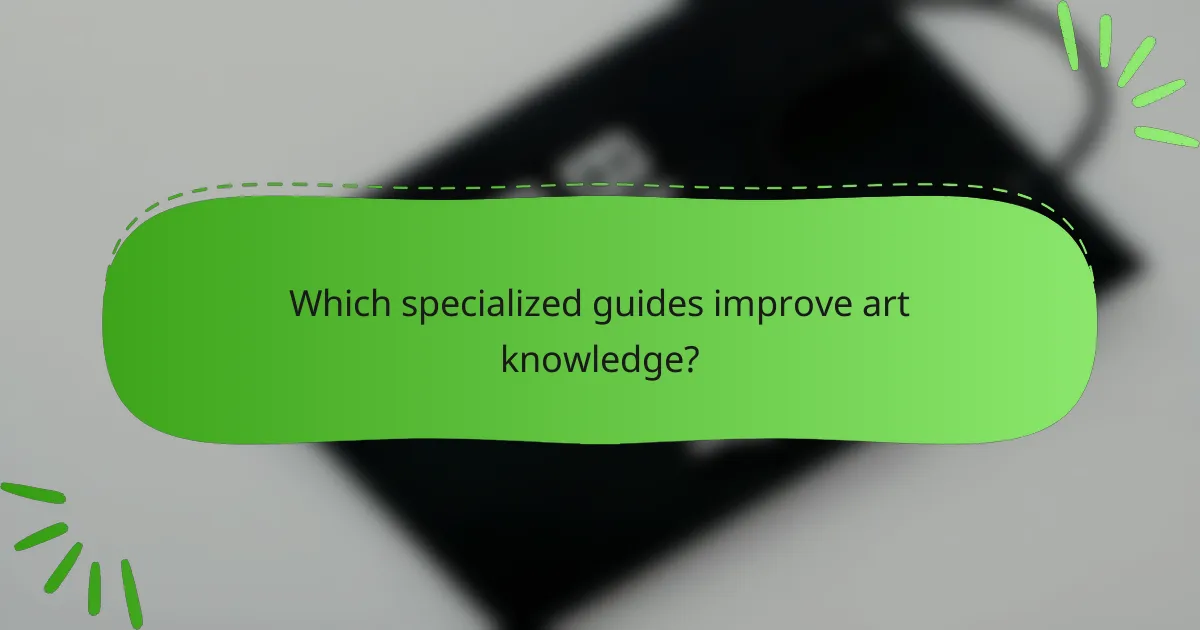
Which specialized guides improve art knowledge?
Specialized guides that enhance art knowledge include resources focused on art history, artist biographies, styles and techniques, and local art scenes. These guides provide essential insights and context, helping art enthusiasts deepen their understanding and appreciation of various artistic expressions.
Art history guides
Art history guides offer comprehensive overviews of different art movements, periods, and influential artists. They often include timelines, key works, and cultural contexts that shaped the art world. Consider resources like textbooks, online courses, or museum publications that cover major developments from the Renaissance to contemporary art.
When selecting an art history guide, look for those that are well-reviewed and updated regularly to reflect new research. A good guide should balance breadth and depth, giving you a solid foundation while also allowing for deeper exploration of specific topics.
Artist biography resources
Artist biography resources provide detailed accounts of individual artists’ lives, influences, and contributions to art. These can include books, documentaries, and online databases that compile information on both famous and lesser-known artists. Understanding an artist’s background can enhance your appreciation of their work and the contexts in which they created.
Utilize platforms like artnet or the National Gallery’s artist profiles for reliable information. Be cautious of sources that may present biased or incomplete narratives; cross-referencing multiple biographies can provide a more rounded perspective.
Style and technique references
Style and technique references focus on the various methods and approaches used in art creation. These guides can help you understand different artistic techniques, such as oil painting, watercolor, or digital art, and how they relate to specific styles like Impressionism or Abstract Expressionism. Look for instructional books or online tutorials that break down these techniques step-by-step.
When exploring styles and techniques, consider practical workshops or online courses that allow for hands-on learning. Engaging with the techniques yourself can significantly deepen your understanding of the material and its application in art.
Local art scene publications
Local art scene publications highlight the unique artistic expressions and events within a specific region. These can include magazines, newsletters, or websites that cover local galleries, exhibitions, and artist profiles. Staying informed about your local art scene can enhance your engagement and support for nearby artists.
Seek out community art organizations or local galleries that produce regular publications. Attending local art fairs or exhibitions can also provide firsthand insights into the regional art landscape, allowing you to connect with artists and fellow art enthusiasts.

How to choose the right art tour for your needs?
Choosing the right art tour involves identifying your interests, understanding the format and length of the tour, and evaluating feedback from previous participants. This ensures that the experience aligns with your expectations and enhances your appreciation of the art.
Assessing personal interests
Start by considering what types of art resonate with you. Are you drawn to contemporary pieces, classical works, or specific artists? Knowing your preferences will help you select a tour that focuses on your areas of interest, whether it be modern art galleries or historical exhibitions.
Additionally, think about the themes or styles that excite you. Tours may offer specialized focuses, such as street art, sculpture, or photography. This clarity will guide you in finding a tour that aligns with your artistic passions.
Comparing tour lengths and formats
Art tours can vary significantly in length, from quick one-hour visits to full-day excursions. Determine how much time you can dedicate to the experience, as this will influence your choice. Shorter tours may offer a snapshot of highlights, while longer ones often provide deeper insights and more comprehensive explorations.
Formats also differ; some tours are guided, providing expert commentary, while others are self-guided, allowing for personal exploration. Consider whether you prefer structured guidance or the freedom to explore at your own pace.
Evaluating reviews and testimonials
Before committing to an art tour, read reviews and testimonials from past participants. Look for feedback on the quality of the tour, the knowledge of the guide, and the overall experience. Websites like TripAdvisor or local tourism boards can provide valuable insights.
Pay attention to recurring themes in the reviews. If multiple reviewers mention a specific strength or weakness, it’s likely a reliable indicator of what to expect. This research can help you avoid tours that may not meet your expectations.
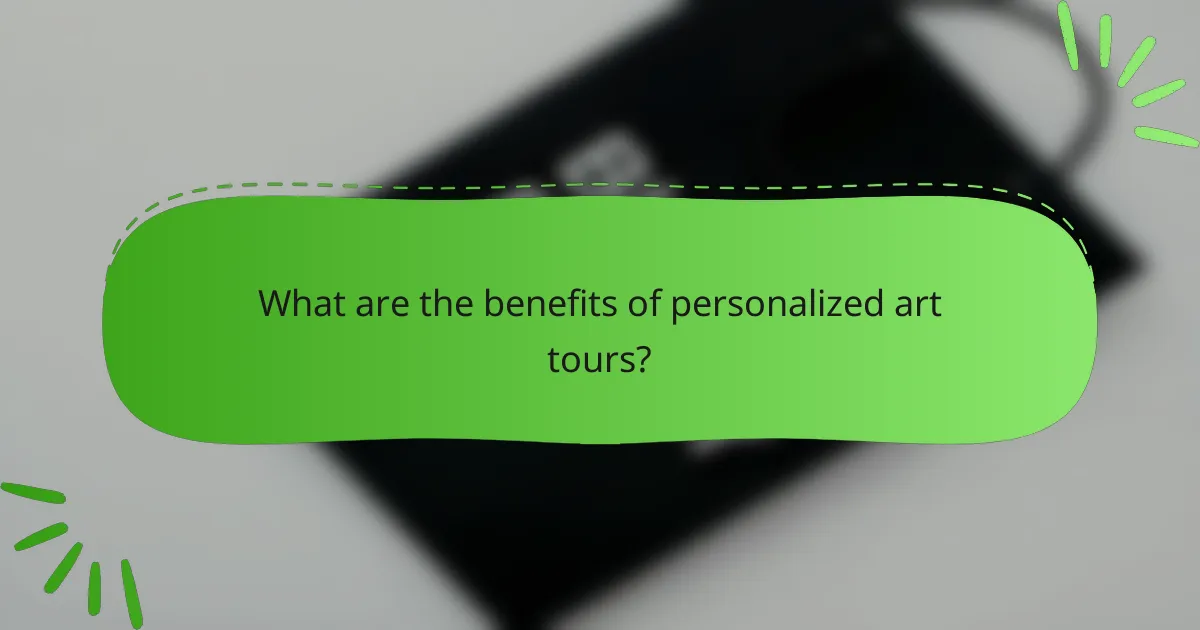
What are the benefits of personalized art tours?
Personalized art tours offer unique advantages that enhance the overall experience for participants. These tours cater to individual interests and preferences, leading to deeper engagement and understanding of the art being explored.
Tailored experiences
Personalized art tours are designed to meet the specific interests of participants, allowing for a more engaging experience. For example, if a visitor is particularly interested in modern art, the tour can focus on contemporary pieces and artists, providing a customized journey through the gallery or museum.
Additionally, these tours can adjust to the pace and preferences of the group, accommodating different levels of knowledge and interest. This flexibility ensures that everyone leaves with a satisfying and memorable experience.
Enhanced learning opportunities
With personalized art tours, participants benefit from deeper insights and knowledge about the artworks and artists. Guides can provide tailored information that resonates with the group’s interests, making the learning process more effective and enjoyable.
Moreover, these tours often include interactive elements, such as discussions or hands-on activities, which further enrich the educational experience. Visitors may find themselves asking questions and engaging in conversations that lead to a greater appreciation of the art.
Stronger connections with art
Personalized tours foster a stronger emotional connection with the art being viewed. By focusing on individual interests and stories behind the pieces, participants are more likely to feel a personal attachment to the artworks.
This connection can lead to a lasting impact, encouraging individuals to explore art further, whether through additional visits, purchases, or even creating their own art. The tailored approach helps to cultivate a genuine appreciation for the artistic world.








